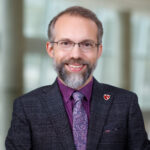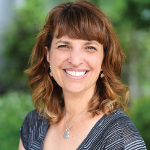From there, I developed a specialty in pediatric physical therapy, working with kids of all ages, including … neonatal [patients]. But it wasn’t until I moved overseas for a while and came back to the U.S. that I shifted focus to the older generation and then into rheumatology.
TR: Would you describe that transition to rheumatology a bit more?
Dr. Ledingham: My transition to rheumatology was generated by an email announcing a predoctoral fellowship at Boston University Sargent College of Health & Rehabilitation Sciences. Although getting a PhD wasn’t on my radar, the opportunity was too awesome to pass up. I became a research assistant for a randomized controlled trial investigating exercise adherence among adults with knee osteoarthritis. This experience was my initiation to the field of rheumatology and my link to the ARP.
I went to my first annual meeting in 2011, and I was completely and pleasantly surprised by the diversity. There were Americans, Canadians and international [attendees]—physicians, nurses, pharmacists, PTs, OTs, researchers. [The meeting included] anybody who had any interest in furthering the field and helping people with rheumatic conditions. And they were all at this conference sharing, talking and laughing. I found myself in an environment where people were excited to learn and mingle with like-minded people. It was simply overpowering, and I was hooked.
TR: You have become a very active volunteer for both the ARP and the ACR since then. How did that come about?
Dr. Ledingham: My initiation into volunteering was with the ARP eLearning Subcommittee. At the time, I was still a doctoral student. I rose up the ranks in that committee, and when I was asked if I wanted to be chair-elect, I said yes. As chair of the eLearning Subcommittee, I became a member of the ACR Committee on Education and was invited to be part of the Education Strategic Plan Task Force. I also spent two years on the ACR Finance Committee. This past year, I was co-chair of the MAC, which was important because it was the first year it was a joint committee between the ACR and the ARP.
TR: What is the significance of the joint approach to the MAC?
Dr. Ledingham: It is the first time that we’ve had such an arrangement between the ARP and the ACR, where we have co-chairs—the president elects from the ARP and from the ACR—and both ARP and ACR members serving on the committee. It has been exciting to have this experience of sharing a leadership role with the ACR president elect and creating a unified committee that took the best pieces of what used to be separate committees and brought them together. I think we got the best of two similar but different worlds.


